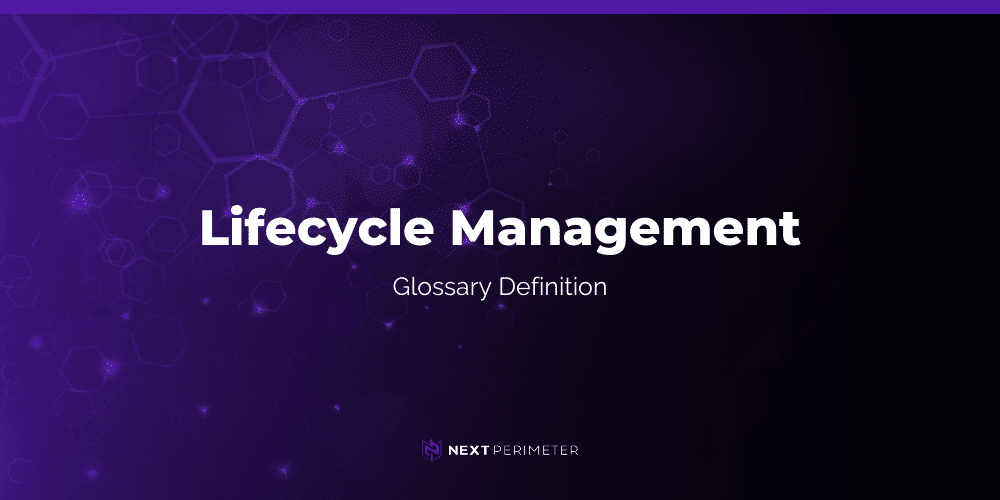
What is Lifecycle Management?
In our fast-paced, digital world, IT Lifecycle Management refers to the comprehensive process of overseeing a device’s journey, from its procurement through its active use, and eventually to its retirement and disposal. With the increasing complexity of today’s technological environment, managing devices effectively is crucial for ensuring smooth operations, reducing costs, and maintaining productivity.
The Importance of Lifecycle Management
In a business environment where uptime and productivity are crucial, effective Lifecycle Management offers numerous advantages:
- Cost Efficiency: Reducing unnecessary purchases, ensuring devices reach their full lifespan, and maximizing value through regular maintenance.
- Improved Productivity: Ensuring devices are always functioning optimally means employees can work without the interruptions caused by device failures or downtime.
- Compliance and Security: Regular updates and maintenance help keep devices secure from vulnerabilities, ensuring compliance with security standards and regulations.
- Seamless Upgrades: Transitioning from older devices to newer models without disrupting operations is critical, especially in larger organizations.
Key Phases of Device Lifecycle Management
1. Procurement
The first step in the lifecycle is procurement—selecting and acquiring the devices that will serve your business needs. This phase involves evaluating current requirements, forecasting future needs, and choosing devices that offer the best combination of performance, durability, and cost-effectiveness.
During procurement, businesses also consider factors like vendor warranties, support agreements, and potential long-term costs. Partnering with established manufacturers, such as Dell, Lenovo, and HP, helps ensure reliable products with strong support options.
2. Deployment
Once devices are acquired, the next phase is deployment. This involves configuring and distributing the devices within the organization. Proper deployment ensures that devices are integrated seamlessly into the existing IT environment, configured with the necessary software, and assigned to the correct users.
A well-structured deployment process minimizes downtime and ensures that employees have the tools they need to start working immediately. This phase also includes setting up security protocols, access controls, and ensuring compliance with company policies.
3. Maintenance and Support
Once devices are in use, maintenance and support become critical. This phase ensures that the devices remain functional and secure throughout their lifecycle. Regular software updates, security patches, hardware repairs, and warranty management are key components of this stage.
One of the standout features of an effective lifecycle management approach is multi-vendor warranty management. With many businesses using devices from multiple manufacturers, managing warranties can become complex. A robust lifecycle management solution simplifies this by providing hassle-free support for devices under warranty, ensuring that businesses can rely on expert repairs and replacements, regardless of the device brand.
For example, working with partners like Dell and Lenovo ensures that devices receive the appropriate support, and that businesses can expect a next business day response to minimize downtime and keep operations running smoothly.
4. End-of-Life Management
No device lasts forever, and eventually, they will need to be retired. The end-of-life phase involves securely decommissioning devices, wiping all sensitive data, and disposing of or recycling the hardware according to industry standards.
Proper end-of-life management is critical for data security and environmental responsibility. Devices should not just be discarded but should be handled in a way that complies with regulations, reduces environmental impact, and minimizes any risk of data breaches.
Benefits of Lifecycle Management
Streamlined Operations
An efficient lifecycle management approach helps businesses streamline their device management processes. From procurement to end-of-life, every phase is planned and executed in a way that reduces inefficiencies and ensures minimal downtime.
Multi-Vendor Warranty Management
One of the standout aspects of lifecycle management is the ability to handle warranties from various vendors. Whether it’s Dell, Lenovo, or HP, businesses can rely on a single point of contact for managing warranty claims, repairs, and replacements. This eliminates the headache of dealing with multiple vendors and ensures that all devices receive the appropriate support.
Strategic Partnerships
By working with leading industry players, businesses benefit from exclusive access to resources, support, and tools that might not be available otherwise. These strategic partnerships ensure that the latest technologies are available to businesses, and that they can rely on top-tier support from their vendors.
National Reach and Next Business Day Response
Having a nationwide presence is critical for businesses that operate across multiple locations. Lifecycle management solutions that offer next business day response times can ensure that devices are repaired or replaced quickly, minimizing downtime and ensuring that employees can remain productive. This level of service ensures that businesses experience minimal disruption, keeping operations running smoothly.
Enhanced Productivity
Effective lifecycle management not only ensures that devices remain operational, but also proactively addresses potential issues before they become major problems. This proactive approach helps keep devices running smoothly and allows employees to focus on their work without worrying about technology failures.
Cost Savings
One of the biggest advantages of a structured lifecycle management approach is cost savings. By maximizing the lifespan of each device, businesses can avoid the cost of frequent replacements. Furthermore, multi-vendor warranty management ensures that repairs and replacements are covered under warranty, reducing out-of-pocket expenses. Regular maintenance and timely upgrades also help prevent unexpected breakdowns, which can be costly to repair.
Optimize Devices with Lifecycle Management
In today’s fast-paced business environment, managing IT devices effectively is critical for maintaining productivity and keeping costs under control. Lifecycle Management offers a comprehensive solution that oversees every phase of a device’s journey, from procurement to retirement. By streamlining operations, ensuring seamless support, and maximizing device performance, businesses can focus on what matters most — growing and driving their operations forward.
With benefits such as multi-vendor warranty management, nationwide support, and cost savings, a robust lifecycle management strategy ensures that devices are always ready to support your business’s evolving needs. By partnering with industry leaders and leveraging proactive management strategies, businesses can enhance their IT infrastructure, improve productivity, and reduce costs.
